Utah has one of the largest spreads of climate zones in the United States, ranging from Zone 4a in the northern mountains to Zone 9b in the southwest. This creates very diverse gardening conditions throughout the state, which is something to keep in mind when selecting the star of the show for your spring garden: the tulip.
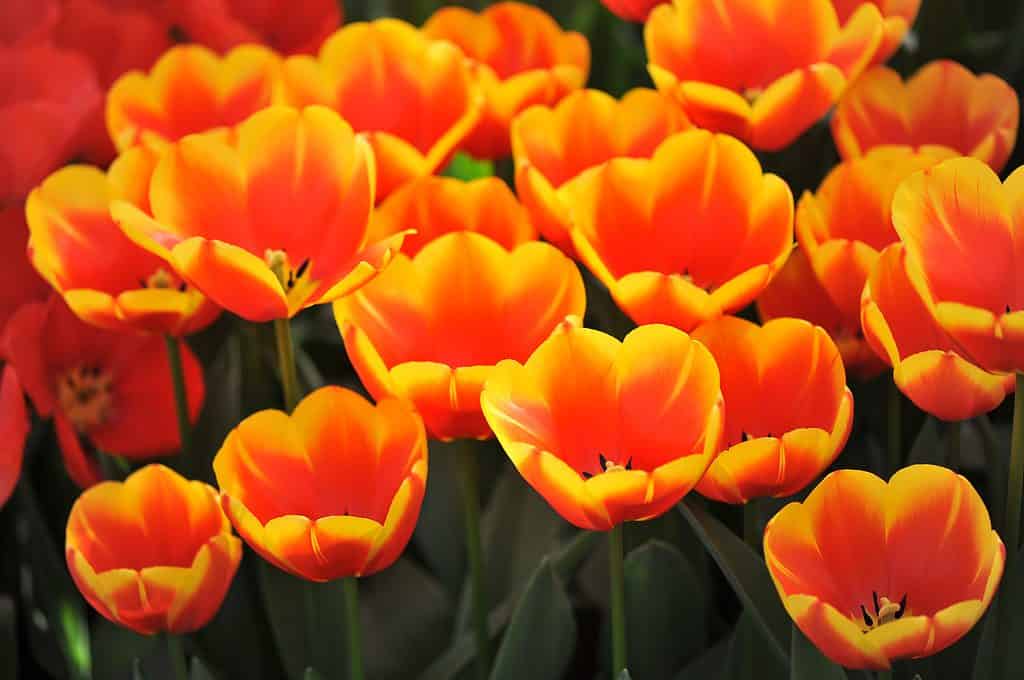
Beautiful orange-yellow Darwin hybrid tulips.
©Sergey V Kalyakin/Shutterstock.com
The Tulipa genus includes around 150 species with over 3,000 cultivars. They are divided into 15 different classifications based on shape, height, and when they bloom.
The vast number of tulips, combined with the varying climates in the state, can leave Utah gardeners scratching their heads. Here are some helpful tips on choosing and growing a spectacular spring tulip display wherever you are in the Beehive State.
| Tulip Facts | |
|---|---|
| Botanical name | Tulipa spp. |
| Common Name | Tulip |
| Plant Type | Perennial, bulb |
| Sunlight | Full |
| Soil | Rich, well-drained |
| Bloom Season | Spring |
| Toxicity | Toxic to both humans and pets |
Types
With the wide variety of tulips and the vast climatological range in Utah, choosing the right flowers for your garden or flower bed can be daunting. Here are three types of tulips that can delight Utahns every spring.
Darwin Hybrid Tulips
The Darwin hybrid tulip is among the most popular tulip cultivars due to its tall growth and brilliantly colored bulbs. It blooms in mid-spring and comes in a spectacular array of vibrant colors, including yellow, red, pink, orange, white, and bi-color.
The Darwin hybrid is a great option for Utah gardens. It is a hardy bulb recommended for growing in Zones 3-8. That makes this wind and weather-resistant tulip the ideal choice for the colder zones of northern Utah. They can also grow in a variety of environments, from partial shade to full sun.
One of the tallest-growing tulips, Darwin hybrids can reach heights of 28 inches or beyond.

Darwin hybrid tulips can display various colors, including white and pink.
©Printemps PhotoArt/Shutterstock.com
Triumph Tulips
The largest group of tulips with the widest range of colors, triumph tulips thrive in the colder to mid-range Utah climate zones.
Triumphs don’t grow as tall as Darwin Hybrids, but their medium-length stems are stout and hold up well in strong winds. In addition, they feature classically-shaped tulip blooms that appear in mid-late spring.
One drawback is that, as a later-blooming tulip, the total bloom time is often shorter than earlier bloomers.
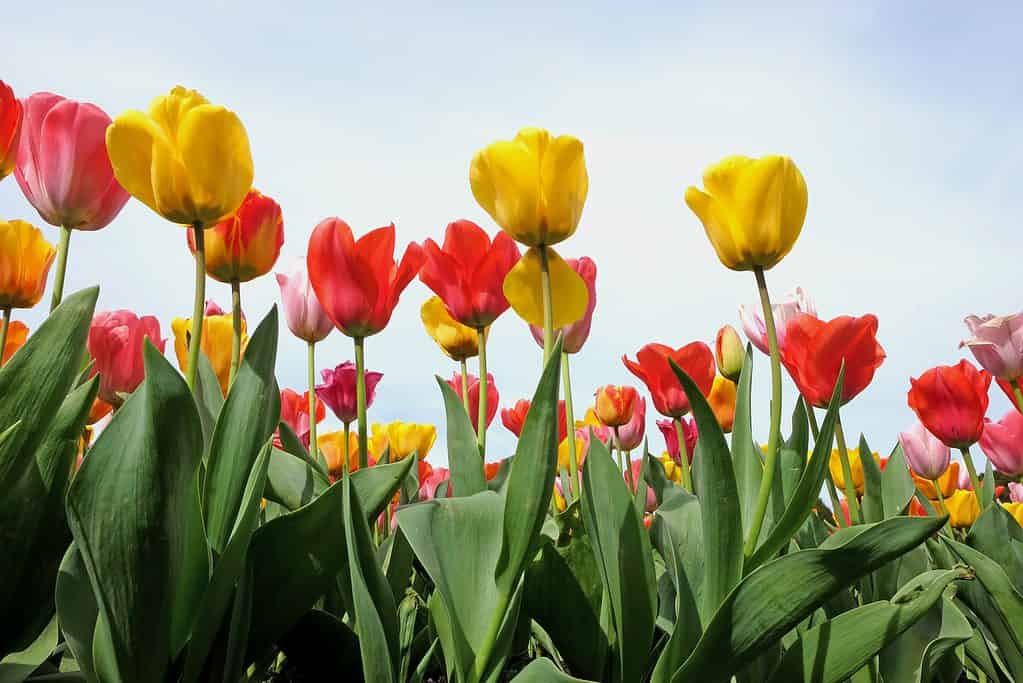
Triumph tulips are a bit shorter than Darwin hybrids but have thick, stout stems.
©Alex Manders/Shutterstock.com
Single Late Tulips
As the name suggests, single late tulips bloom in late spring. But they are one of the better tulip choices for warmer climates, so that the single late could be your go-to tulip in southern Utah.
Single late tulips come in a rainbow of colors. You can find blooms ranging from white to pink to yellow to orange to nearly black.
French single late tulips fare particularly well in warmer zones because the bulbs mature earlier, so residents of southern Utah might want to seek them out specifically.

French single late tulips come in a rainbow of colors, including orange and pink.
©ISmiths/Shutterstock.com
Planting Tips
Regardless of which tulip you choose, some general tips and practices will help your tulip garden flourish.
Bulb Selection
Inspect each bulb before planting. If a bulb looks withered or moldy, discard it.
Healthy bulbs are beige or white with a paper-like outer jacket. Look for bulbs that are dry and firm, not soft or squishy. You also want bulbs with no spots, streaks, or cracks.
Bigger bulbs also lead to healthier flowers. The bulb is where all the nutrients for the flower are stored. Bigger bulbs have a greater build-up of nutrients, which translates into bigger, healthier, longer-lasting blooms.

Healthy tulip bulbs are large and free of discoloration.
©Natallia Ustsinava/Shutterstock.com
When to Plant
Tulip bulbs are hardy, meaning they require a period of cold weather to end their dormancy. If the bulbs do not go through this cold weather period, they will not grow and bloom in the spring.
Planting tulip bulbs is best when the soil temperature is below 55°F. For a state with such climate diversity, it’s impossible to construct a one-size-fits-all timeline for planting Utah bulbs. But, as a general rule, the planting season runs from September to early November. This allows the bulbs to take root before the ground freezes. Check the soil temperature in your locality, though. That is the single best gauge to determine when to plant your bulbs.
Where to Plant
Tulips thrive in rich soil, with at least six hours of bright sunlight per day. Choose a spot that drains well. If the soil remains perpetually wet, it can lead to bulb rot.
Plant the bulbs with the pointed side up and space them about 4 inches apart. It is recommended to plant bulbs 8-10 inches deep.
Organic compost or synthetic fertilizer can also give your tulips a boost. When fertilizing, choose a slow-release fertilizer with a nutrient ratio of 9-9-6.
If you prefer an organic mix, you can use equal parts blood meal, greensand, and bone meal.
Perennial?
While tulips are indeed perennials, many gardeners struggle when trying to coax the blooms to return year after year. This is especially true in warmer climate zones.
Tulips, and all other bulbs, require cold weather to emerge from dormancy. In fact, it is the number one need for them to bloom year after, and that’s why tulips don’t perennialize well in warmer climate zones. In southern Utah, for example, it’s best to simply ignore the perennial label. Treat tulips as annuals by digging up the bulbs after the growing season and planting new bulbs in the fall.
When in Bloom
When tulip sprouts appear in the spring, it can be tempting to protect them from the elements. While that may be true in cases of extreme, sudden cold, it’s normally best to simply leave the new growths alone.
Tulip bulbs are hardy, meaning they can handle the unpredictable and ever-changing conditions of springtime. Actually, more damage can be done by covering these flowers with a sheet or blanket than by leaving them exposed to the cold, with rare exceptions made in extreme weather circumstances.
Most of the time, though, the best thing you can do is nothing at all. Let those hardy bulbs do what hardy bulbs do!
Toxicity
Tulip bulbs contain alkaloid and glycoside compounds that are mildly toxic to humans and moderately toxic to pets.
Gardening gloves are highly recommended when handling bulbs or blooms to prevent “tulip fingers,” a skin rash well-known to tulip growers.
Common Pests
As with most flowers, there are some pests that can damage your tulips.
Aphids
These insects suck juices out of the plant. They can also carry the tulip-breaking virus (TBV).
TBV creates broken, striped patterns on the flowers that can actually appear quite beautiful. In fact, infected flowers were once highly sought after due to their unique appearance. This was stopped long ago, though, because of the destruction and spread of this virus.
Any tulip infected with TBV should be destroyed. Otherwise, the virus will spread to other flowers.
Aphids can be effectively controlled using insecticidal soap.
Spider Mites
These pests also suck juices from tulip leaves. If the leaves show yellow or white specks, spider mites may be to blame.
Like aphids, insecticidal soap is effective at controlling spider mite infestations.
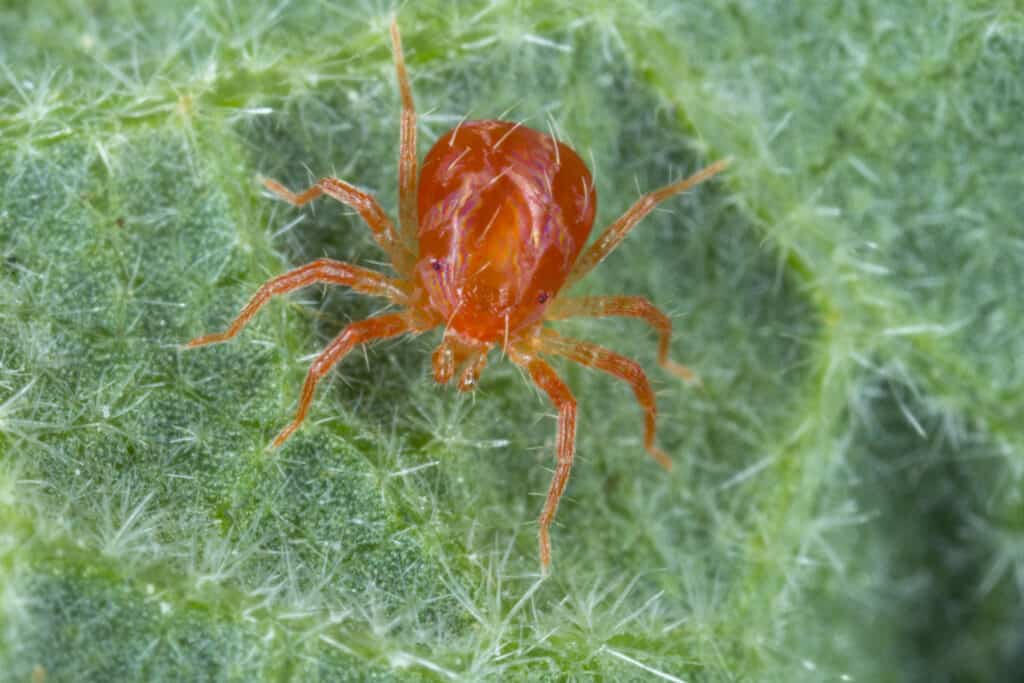
Spider mites have a distinctly red/orange color that distinguishes them from aphids.
©Tomasz Klejdsz/Shutterstock.com
Wildlife Problems
Utah’s wildlife, while spectacular, can pose a problem for your tulips. For example, chipmunks and squirrels love to dig up tulip bulbs in the fall. As recommended above, planting at a deeper depth can deter these critters.
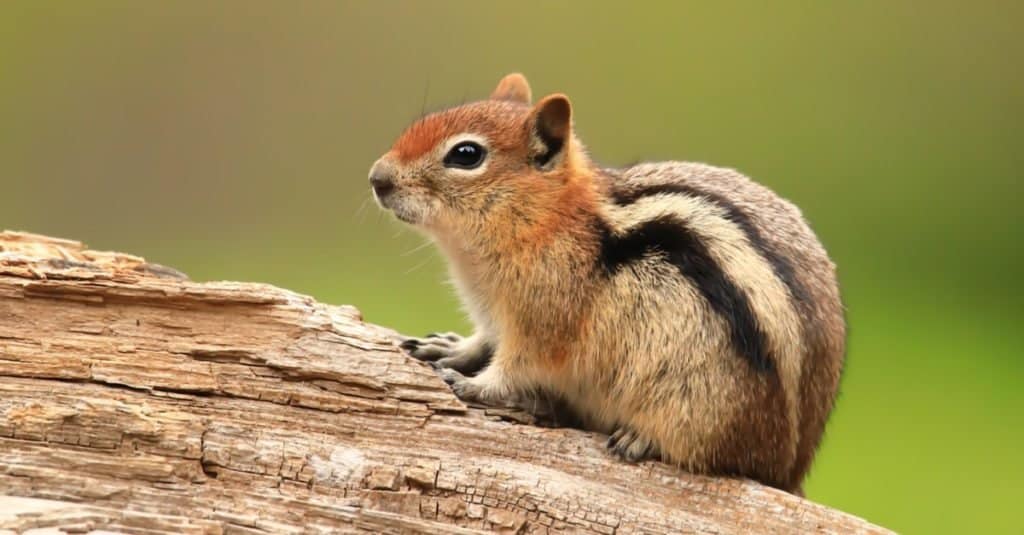
Chipmunks are cute but also pesky when tulip bulbs are planted.
©AmberLouise/Shutterstock.com
Rabbits, mice, and voles are also potential culprits if you find your tulips damaged.
You may consider using a commercially available repellent to keep these pesky critters away from your tulips. Be sure to read and follow the directions on the product’s label.
Utahns can enjoy a tulip-filled spring, regardless of where they live, by choosing the right flower and creating the right conditions.
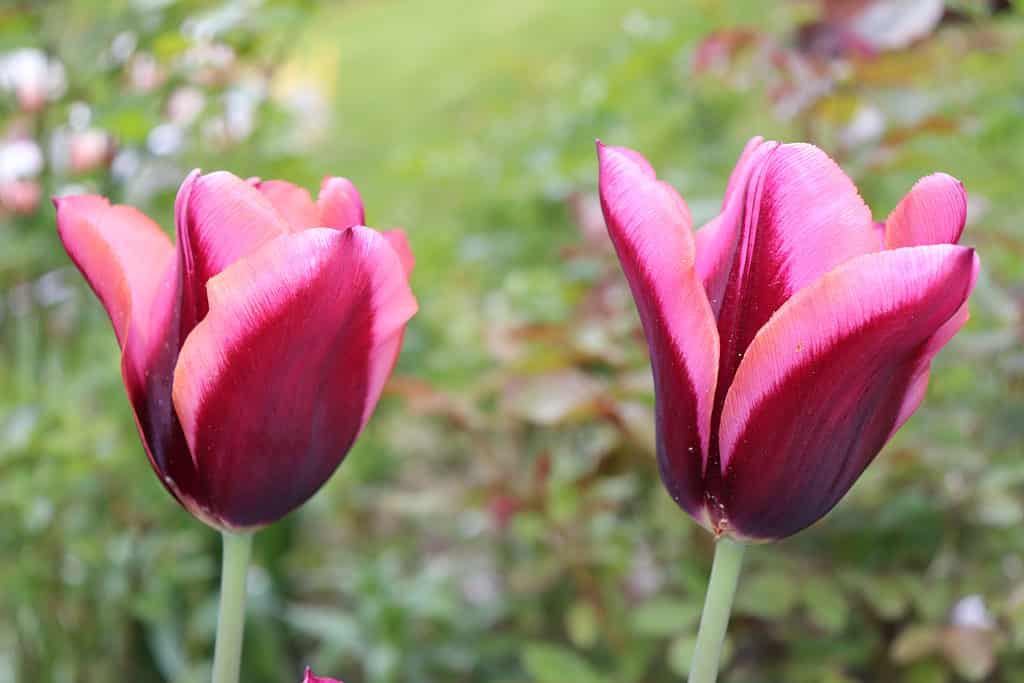
Dark maroon and salmon triumph tulips.
©Galina Bolshakova 69/Shutterstock.com
Thank you for reading! Have some feedback for us? Contact the AZ Animals editorial team.








